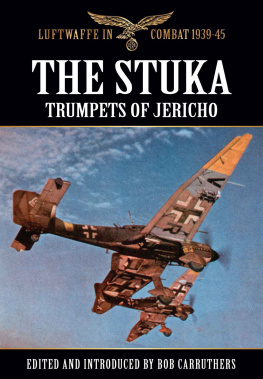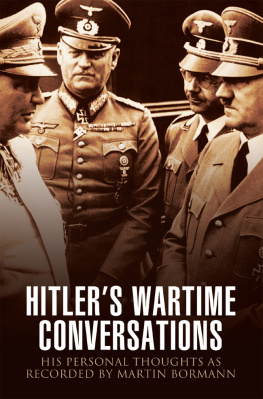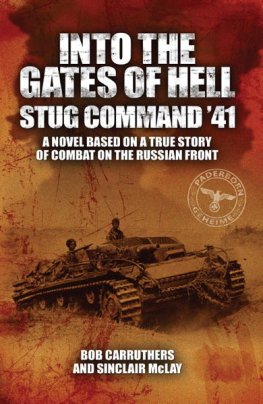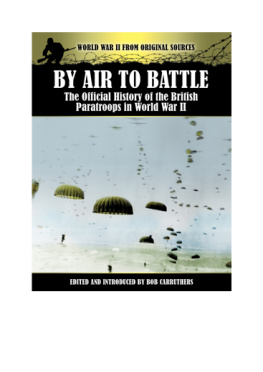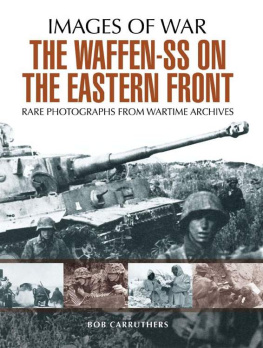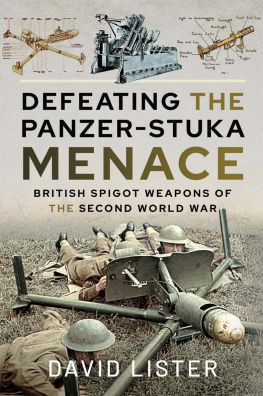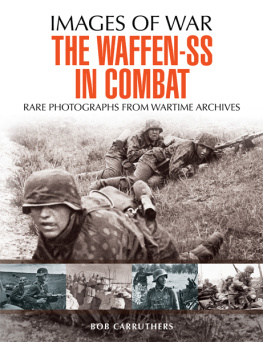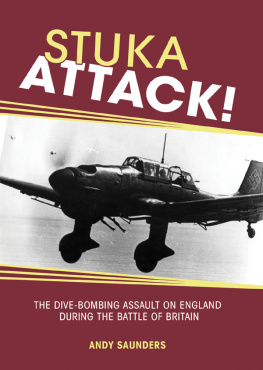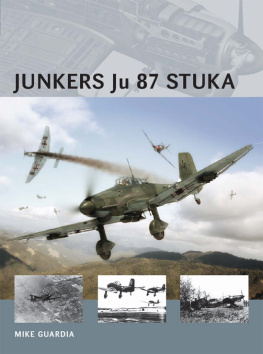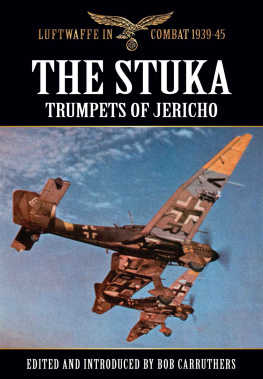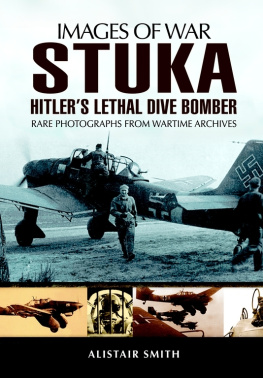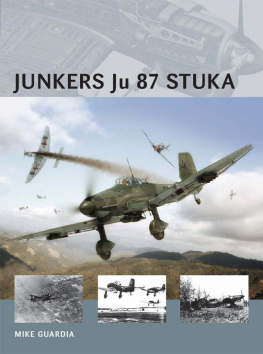Bob Carruthers - The Stuka: Trumpets of Jericho
Here you can read online Bob Carruthers - The Stuka: Trumpets of Jericho full text of the book (entire story) in english for free. Download pdf and epub, get meaning, cover and reviews about this ebook. year: 2012, publisher: Coda Books, genre: History. Description of the work, (preface) as well as reviews are available. Best literature library LitArk.com created for fans of good reading and offers a wide selection of genres:
Romance novel
Science fiction
Adventure
Detective
Science
History
Home and family
Prose
Art
Politics
Computer
Non-fiction
Religion
Business
Children
Humor
Choose a favorite category and find really read worthwhile books. Enjoy immersion in the world of imagination, feel the emotions of the characters or learn something new for yourself, make an fascinating discovery.
- Book:The Stuka: Trumpets of Jericho
- Author:
- Publisher:Coda Books
- Genre:
- Year:2012
- Rating:4 / 5
- Favourites:Add to favourites
- Your mark:
- 80
- 1
- 2
- 3
- 4
- 5
The Stuka: Trumpets of Jericho: summary, description and annotation
We offer to read an annotation, description, summary or preface (depends on what the author of the book "The Stuka: Trumpets of Jericho" wrote himself). If you haven't found the necessary information about the book — write in the comments, we will try to find it.
The Stuka: Trumpets of Jericho — read online for free the complete book (whole text) full work
Below is the text of the book, divided by pages. System saving the place of the last page read, allows you to conveniently read the book "The Stuka: Trumpets of Jericho" online for free, without having to search again every time where you left off. Put a bookmark, and you can go to the page where you finished reading at any time.
Font size:
Interval:
Bookmark:


This ebook edition published in Great Britain in 2012 by Coda Books Ltd, The Barn, Cutlers Farm Business Centre, Edstone, Wootton Wawen, Henley in Arden, Warwickshire, B95 6DJ
www.codabooks.com
Copyright 2012 Coda Books Ltd
All rights reserved. No part of this publication may be reproduced or transmitted in any form or by any means, electronic or mechanical, including photocopy, recording, or any information storage and retrieval system, without permission in writing from the publisher.
A CIP catalogue record for this book is available from the British Library
ISBN 978 1 78158 112 4
They appear in all of the newsreels, the screaming sirens spelled terror from Poland to Moscow, the image of the Stuka is synonymous with World War II, but the legend was out of proportion to their effectiveness. There were never more than seven hundred in service at any given time, but despite its relative scarcity, the Stuka was to leave an impression on World War II out of all proportion to its numbers.
This book forms part of the series entitled Hitlers War Machine. The aim is to provide the reader with a varied range of materials drawn from original writings covering the strategic, operational and tactical aspects of the battles of Hitlers war. The concept behind the series is to provide the well-read and knowledgeable reader with an interesting compilation of related primary sources and the best of what is in the public domain to build a picture of a particular aspect of that titanic struggle.
I am pleased to report that the series has been well received and it is a pleasure to be able to bring original primary sources to the attention of an interested readership. I particularly enjoy discovering new primary sources, and I am pleased to be able to present them unadorned and unvarnished to a sophisticated audience. The primary sources such as Der Adler magazine, speak for themselves and the readership I strive to serve is the increasingly well informed community of reader/historians which needs no editorial lead and can draw its own conclusions. I am well aware that our community is constantly striving to discover new nuggets of information, and I trust that with this volume I have managed to stimulate fresh enthusiasm and that at least some of these facts and articles will be new to you and will provoke readers to research further down these lines of investigation, and perhaps cause established views to be challenged once more. I am aware at all times in compiling these materials that our relentless pursuit of more and better historical information is at the core our common passion. I trust that this selection will contribute to that search and will help all of us to better comprehend and understand the bewildering events of the last century.

Three Junkers Ju 87D of Sturzkampfgeschwader 77 in Russia 1943.
In order to produce an interesting compilation giving a flavour of events at the tactical and operational level I have returned once more to the US Intelligence series of pamphlets, which contain an intriguing series of contemporary articles on weapons and tactics. I find this series of pamphlets particularly fascinating as they are written in the present tense and, as such, provide us with a sense of what was happening at the face of battle as events unfolded.
To complete the selection I have drawn upon a small section of the post war debriefs undertaken for the US Army Historical department. This is a hugely underrated source and is often overlooked. I have included them here as they give an excellent flavour of the frustrations experienced by pilots in the air commanders at the operational level attempting to make things work against a background of constant interference from Hitler.
The men who fought against the Stuka would recognise instantly the angular gull winged shape and come to fear them. Those who flew in them, forever held the aircraft dear to their hearts.
First flown in 1935, the Stukas were already considered obsolete by the start of the war only four years later, but their champion, General Lieutenant Wolfram von Richthofen was confident that his warplanes would prove their worth. Originally one of the many opponents of the dive bomber concept, Richthofen had been deeply impressed by the lethal accuracy of the handful of dive bombers available to the German Condor Legion in the Spanish Civil War; as a result the Stukas were given a reprieve which was to last the entire six years of the war.
The overriding advantage of the Stuka was the accuracy of its bombing run. Conventional bombers of the time released their bombs at high altitude, aiming devices were rudimentary and accuracy was necessarily poor.
Dive bombers swooped down on their targets and guided their bombs towards the target allowing far greater accuracy.
With the special dive brakes applied, the Stuka could fly so low before pulling out of its dive, it could almost place its bomb on the target, and its cranked wings allowed excellent forward vision.
But there was one major disadvantage. The Stuka was very slow and cumbersome. It was almost defenseless against modern fighters such as the Spitfire or the Hurricane. Time and again, this great weakness would come back to haunt the German airforce.
Even by the exacting standards normal for aerial combat, the men who flew the Stukas had to be exceptionally fit.
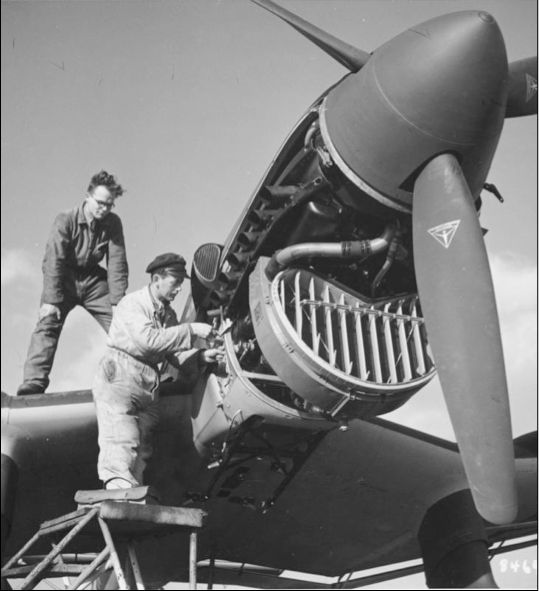
The ground crew at work on the engine of a Stuka, Russia 1944.
Coming out of a dive, the two crewmen were subjected to a centrifugal force up to five times that exerted by gravity. Blood was drained from the retina and brain, usually leading to a temporary blindness and loss of consciousness. It was found that short, stocky pilots in their thirties and forties were best able to withstand the high G forces involved in a dive bomb attack.
To combat the disastrous possibilities of the crew losing consciousness, the Stuka was fitted with an automatic pull-out and bomb release mechanism which prevented loss of control during this critical part of the dive bombing manoeuvre. In other respects the controls were surprisingly simple. Early versions had only two instruments, a compass and a turn and bank indicator.
Slowed down by the fixed under-carriage, top speed was less than two hundred and fifty miles an hour. The Stuka was armed with two fixed forward machine guns and a third rear-facing gun operated by the navigator, who sat with his back to the direction of travel. The Stuka carried either a single one thousand kilo bomb under the fuselage, or one five hundred kilo bomb, plus four smaller bombs under the wings.
The Junkers 87 was first penned in 1933 by Hermann Pohlmann. The distinctive inverted gull wings allowed the shortest undercarriage to reduce drag. Winning a dive bomber design competition in January 1935, the first prototype had taken to the air in September 1935, powered ironically by a Rolls Royce V12 Kestrel engine. The production 87 Anton of 1937 was powered by a supercharged Jumo 680 horse engine and with dive brakes to control its descent. By the outbreak of war, the 87B-1 boasted an 1100hp Jumo 21 engine and the cumbersome undercarriage fairings had been replaced by lightweight spats.
Font size:
Interval:
Bookmark:
Similar books «The Stuka: Trumpets of Jericho»
Look at similar books to The Stuka: Trumpets of Jericho. We have selected literature similar in name and meaning in the hope of providing readers with more options to find new, interesting, not yet read works.
Discussion, reviews of the book The Stuka: Trumpets of Jericho and just readers' own opinions. Leave your comments, write what you think about the work, its meaning or the main characters. Specify what exactly you liked and what you didn't like, and why you think so.

